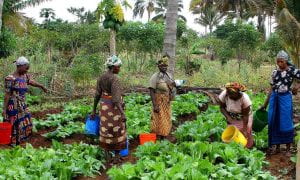
Environmental degradation has a profound impact on women in the Global South, affecting them in various ways. Some impacts include:
~ Loss of livelihoods – women in the Global South often rely on occupations like agriculture, fishing, and forestry for their income. Environmental degradation can negatively impact their livelihoods by reducing crop yields and access to resources.
~ Health concerns – toxins from the environment and contaminated water sources can result in poor health, particularly for pregnant women and mothers with young children.
~ Increased workload – women in these regions are usually tasked with collecting resources such as water, firewood, and food, and environmental degradation such as droughts, deforestation, and soil degradation can make these activities more challenging and time-consuming.
~ Forced Displacement – climate change and other environmental degradation can cause women to be forced from their homes and communities, resulting in a loss of cultural
~ Underrepresentation in political decisions – women in the Global South are frequently underrepresented in political decision-making processes, meaning that their experiences and perspectives on environmental degradation may not be taken into consideration.
“Women belong in all places where decisions are being made. It shouldn’t be that women are the exception.” ~ RBG
Women in the Global South are particularly vulnerable to the effects of environmental degradation and bear a disproportionate share of the burden. It is crucial to address these issues and ensure that women’s voices are included in decision-making processes in order to promote environmental justice and sustainable development.
Ecofeminism from a Western perspective and a non-Western perspective share a commonality in recognizing the interconnectedness between the oppression of women and environmental degradation. However, there are some differences in the fundamental perspectives.
A Western perspective typically views ecofeminism as a movement that seeks to connect the oppression of women and the degradation of the environment, often through a lens of feminist theory and Western philosophy. On her essay, Ecofeminism: Historic and International Evolution, Hobgood-Oster reminds us that Western ecofeminism tends to focus on issues that “bring attention to the interconnection of justice issues related to women and the environment as a whole” (9). Issues such as reproductive rights and the gender pay gap are key components of their movement.
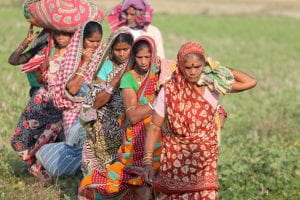
However, a non-Western perspective emphasizes the unique experiences of women in non-Western cultures, such as the connection between colonialism and environmental degradation. Non-Western ecofeminists also focus on traditional knowledge and spiritual practices as a means of achieving environmental sustainability.
Bina Agarwal is a non-Western ecofeminist who highlights the importance of recognizing the intersections of gender, class, and caste/race in addressing environmental degradation. She emphasizes the need to understand the relationship between women and men with nature and to address the unequal distribution of resources and power, which perpetuates both gender inequality and environmental degradation.
On her essay, The Gender and Environment Debate: Lesson from India, Agarwal explains that women in rural and tribal areas face disproportionate impact from environmental degradation due to their traditional roles in fetching fuel and fodder, and in some cases being the primary cultivators. However, their daily interactions with nature also give them unique knowledge about species and natural processes, making them valuable sources of information about the environment. As such, women “could thus be seen as both victims of the destruction of nature and as repositories of knowledge about nature, in ways distinct from the men of their class” (128).
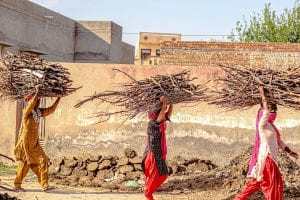
Image by Swastik Arora from Pixabay
I don’t think that I find one perspective more appealing or interesting over the other. At this point I feel both address the issues from a different location standpoint. Nonetheless, women in Less Developed Countries (LCDs) and in the Global South are more vulnerable to the impacts of environmental degradation due to factors such as poverty, lack of access to resources, and limited decision-making power. This highlights the importance of considering the intersection of gender, class, and environment when addressing environmental issues.
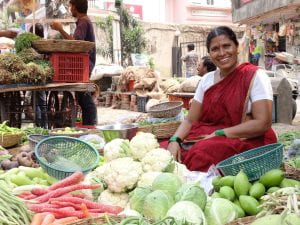
Image by Elvira Groot from Pixabay
Sometimes we read a book that changes how we view the world. I often find myself recalling passages from Amartya Sen’s book Development as Freedom, one of many books in which he discusses his “human capabilities” theory. On women’s agency and social change, Sen writes: “No longer the passive recipients of welfare-enhancing help, women are increasingly seen, by men as well as women, as ‘active agents of change’: the dynamic promoters of social transformations that can alter the lives of both women and men” (189).
These words will stay with me forever.

* Amartya Sen was an Indian economist who was presented the 1998 Nobel Prize in Economic Sciences for his contributions to welfare economics and social choice theory and for his interest in the problems of society’s poorest members.
If interested, here is the link to the documentary film, Living on One Dollar, which follows a group of friends as they experience living on $1 a day for two months in rural Guatemala.
The women in this film are a great example of Sen’s “active agents of change.”

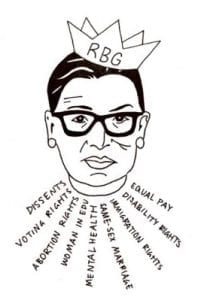
Have you ever considered about adding a little bit more than just your articles?
I mean, what you say is important and all.
Nevertheless think about if you added some great images or video
clips to give your posts more, “pop”! Your content is excellent but with pics and videos, this website could certainly be one of the very best in its
niche. Excellent blog!
Шалость — это русская игра, особенно
популярная среди ребят в сельской местности и на улице.
Её главная суть — в элементе
ловушки и хитрости. Главный говорит фразу «бурмалда-бурмалда» и затем
произносит задания. Суть в том, что игроки
должны выполнять только те команды, которые включают эту особенную фразу.
Если ведущий скажет, например, просто
«встаньте», а игроки встанут
— они проигрывают.
Эта забава одновременно увлекает и укрепляет внимание, восприятие и навык действовать
по правилам. Это простой способ организовать активно время в детском коллективе, особенно на открытом воздухе.
В неё играют как младшие школьники, так и школьники постарше, часто придумывая свои элементы, жаргон и даже разыгрывая неудачников безобидными штучками.
Stop by my web page :: burmalda
Hello! Do you know if they make any plugins to help
with Search Engine Optimization? I’m trying to get my blog to
rank for some targeted keywords but I’m not seeing very good gains.
If you know of any please share. Many thanks!
Great delivery. Sound arguments. Keep up the amazing work.
property and casualty insurance magazine
Hi, everything is going nicely here and ofcourse every one is sharing data, that’s
in fact fine, keep up writing.
Good post however , I was wanting to know if you
could write a litte more on this subject? I’d be very thankful if you could elaborate a little bit further.
Appreciate it!
Does your blog have a contact page? I’m having trouble locating it but, I’d
like to shoot you an e-mail. I’ve got some
ideas for your blog you might be interested in hearing.
Either way, great website and I look forward to seeing
it develop over time.
You have made some decent points there. I checked
on the net for more information about the issue and found most individuals
will go along with your views on this website.
I got this website from my buddy who told me on the topic of this site and at the
moment this time I am browsing this site and reading very informative articles or reviews at this time.
Thanks for sharing your thoughts on couvreur toiture à proximité.
Regards
I every time emailed this website post page to all my contacts, as if like to read it after that my friends will too.
I got this web site from my pal who shared with me regarding this web page
and now this time I am visiting this web site and reading very informative articles or reviews at this time.
Hi there! Would you mind if I share your blog with my myspace group?
There’s a lot of people that I think would really appreciate your content.
Please let me know. Cheers
Адвокат по уголовным делам
When someone writes an article he/she retains the thought of a user in his/her
mind that how a user can understand it. Therefore that’s why this piece of
writing is outstdanding. Thanks!
Your blog is so well written. You explain where ecofeminism differs with regard to Western theory versus Non-Western. You breakdown the environmental impacts (degradation) on women in the global south clearly and concisely.
I particularly loved the Image of Ruth Ginsberg in order to illustrate the growing movement in the global south of women pushing to be a part of the conversation. Agarwal’s makes note of the fact that in India women have started to challenge the fact that they are not included on committees within their communities and as a result are left out of those conversations pertaining to the very issues and events that are impacting their lives disproportionately. It is crazy to me that the women who hold such critical knowledge of land and the ecosystem in which they live, are not given the opportunity to invest that information. The women so clearly see the end game and because they experience the negative impact of these decisions on a greater scale, they are more in tune with the systemic environmental issues that now plague their communities. The Chipko women are an example of this and ask the question, “Why aren’t we members of the village councils?” (Agarwal, 148). They are pushing to have a more active part in decisions made that impact on their communities.
One of the best illustrations of this is deforestation. When I looked at the chain reaction of the resulting events, other than the possibility of some quick cash, all of it was negative and specifically negatively impacted the women. The lack of resources creates longer pilgrimages for wood and fodder which means their day is longer and work is harder. This has also adversely affected their income as there is less to sell so they are having to work harder for less money. They are not able to provide as much fuel for their homes, which results in less cooking, which equates to poor nutrition. At every turn it appears that the women experience these losses at a greater decibel. Collection of water is much the same culminating in greater exposure to contaminants that cause disease and other illness.
While I enjoy all of the ideology that goes into both Western ecofeminism and feminist environmentalism, I do feel that the non-Western theory and its application, makes more sense to me even from a Western perspective. I feel that where Western theory fails to look at the entirety of women (looking at gender as the one and only category of analysis) I think Non-Western philosophy acknowledges that women’s diversity within different identities (class, culture/race, religion, etc.) lends to different perspectives – thus resulting in different knowledge, concerns, necessities/priorities, and methods of action. Non-Western theory encompasses all of Western in addition to utilizing the diversity of women to take a more comprehensive look at women and their relationship with the environment. I thought it was important that Agarwal points out that even Shiva “does not differentiate between women of different classes, castes, races, ecological zones, and so on” (Agarwal, 125). Shiva is primarily referring to topics and issues that affect the poor rural women of India but does not actually point to class to differentiate their experiences from others or to identify their relationship to the environment as unique in respect to class.
I found this article about intersectional environmentalism. The author does a great job at explaining why other aspects of her identity as a woman are important to her in respect to her relationship with the environment. Author Leah Thomas explains, “While I’m sure there is an Intersectional Ecofeminism that addresses cultural appropriation, the mainstream feminist spaces didn’t always feel inclusive, representative, or safe; they didn’t acknowledge all the intersections of my identity and how it applied to my experience as a woman. I realized that my Blackness shouldn’t be an extra “add on” to my feminism or environmentalism. When intersectional theory is applied to both, I feel seen and heard in those spaces.”
https://www.thegoodtrade.com/features/ecofeminism-intersectional-environmentalism-difference/
Thank you for the book recommendation, “Development as Freedom”. It sounds terrific and would be a good resource for my continued education in Women and Gender Studies. The quote that you shared got to me. Very powerful and very accurate! I also plan to checkout “Living on One Dollar.”
Hi Teresa,
Thank you for your feedback and insights on my post this week! I’m glad you found it informative and engaging. Although this is the first course I have taken that focuses specifically on environmental issues, I am truly enjoying – much more than I anticipated – the interaction and the knowledge I am gaining from each topic addressed by the other blogs, including yours – thank you!
It’s important to recognize the diversity of women’s experiences and perspectives, especially in the context of environmental issues, and I’m glad that non-Western ecofeminism takes this into account. The concept of intersectional environmentalism, which acknowledges the interconnectedness of various identities and their relationship to the environment, is also crucial in promoting inclusivity and understanding in the movement. This is particularly interesting to me because of my personal interest in the concept of intersectionality, due to my many intersecting identities. I am fascinated by all the ways women’s identities intersect, and the more I learn the more interested I become. So, thank you so much for sharing the article; I will definitely read it.
Amartya Sen wrote many books; Development as Freedom was the first I read as part of a course requirement. I plan on reading the others after graduation when I have more time for pleasure reading. I hope the book recommendation proves useful in your continued learning.
Hi Rose,
Your blog post for this week caught my eye when I saw the drawing of RBG. Although I have not read much about her, I know that she was the voice for so many women who didn’t have a voice! I enjoyed reading her quote below her photo. I couldn’t agree more with her words. I am wondering if RBG had anything to do with eco-feminism? If she was, I wasn’t aware of it. I will have to look her up more.
I had an interesting moment today as I was driving. It was around 11:30, as I was driving to the supermarket to go get some things. I was approaching the turn that would take me to the store, but something came over me, that made me instead turn in the opposite direction. I knew where the road led. I wasn’t lost, but just decided to drive. There are roads that if you take them in a certain way, make a really big circle around the city for miles. Eventually you will end up back in town. However, I just felt this urgency that I needed to just drive, and look at nature, and listen to music that connected with the earth. It was the best part of my day! It made me so fulfilled to look around at everthing passing by as I drove, and look at all of the trees, grass,snow,birds etc…I felt like I hadn’t really admired those things before in that part of the drive during previous trips. Maybe it’s because I am taking this class that I felt compelled. Hmmm…Couldn’t really explain it. Just one of those moments in life that you just let happen.
In terms of this weeks reading, I really connected and appreciated Agarwal’s use of including women’s biological ability to unite with nature in terms of growing and giving birth to a child. I didn’t see that in Hobgood’s article, and that made me a little disappointed.
You speak very straightforwardly about how western and non-western ecofeminists see the intersecting issues that are prevalent to the world and to the earth. Agarwal dives deeper into the relationship between the degradation of the earth, and how it DIRECTLY effects Indian women who use it for their livelihoods and for feeding themselves, their families, and their communities! I can’t help but feel as if modern eco-feminism is a bit distant from those points, now that feminism in general has been nudged into accepting and relating to other more personal issues when it comes to ‘women’.
Thanks for the interesting read!
Hi Alina,
Thank you for your thoughtful response and sharing your experience of driving and connecting with nature. It’s amazing how nature can have a calming and fulfilling effect on us.
To answer your question, Ruth Bader Ginsburg’s work mainly focused on women’s rights and gender equality, and I am not aware of her involvement in eco-feminism specifically. However, her advocacy for social justice and equality can be seen as interconnected with eco-feminist principles, as both aim to address power imbalances and promote a more just and equitable world.
I’m glad you found Agarwal’s perspective on the relationship between Indian women and the environment compelling. It’s important to recognize that the impact of environmental degradation is not felt equally, and that marginalized communities, particularly women, are often disproportionately affected. Eco-feminism seeks to address these intersecting issues and promote a more holistic approach to environmental and social justice.
Thanks again. I appreciate your feedback and insights!
Hi Rose,
After reading your post, I explored the issues that the Chipko women were faced with. While it is commendable that the Chipko women in India have initiated a movement to protect the land from deforestation, it is unfortunate that the ecological disasters that are occurring have forced a “knee jerk” reaction to responding to the problem. This is all too often the case. Here in the US, we wait until we hear that our clean water, air, vegetation and animal species have all been compromised and are at “critical” levels due to generations of apathy before people pay attention.
The Chipko Movement comes from the word, “chipko,” which means to hug or to cling to.
“Women were often most affected by deforestation of the Himalayas because they were responsible for cooking and thus cultivating crops from the forest. Women began taking lead in the Chipko movement, but it is important to note this was not a feminist movement or even an environmental movement in a “western sense.” Villagers affected by the exploitation of the forests had no choice but to protest, their homes and livelihoods were being destroyed.
Interestingly enough, the origins of this movement date back to the 1920s and 1930s. It was at this time that British colonists exploited and destroyed forests in Uttar Pradesh for shipbuilding for their navy and for expanding railway networks. “The Forest Act of 1927 furthered British interests resulting in an increase of forest satyagrahas.” (Satyagrahas are people who were first united under Ghandi their goal is to eliminate antagonisms without harming the antagonists themselves .” The Uttar Pradesh region has long been coveted for its forests and resources, often leaving local villagers to deal with the consequences of governmental exploitation of their land.
https://rightlivelihood.org/the-change-makers/find-a-laureate/the-chipko-movement/
https://thenonviolenceproject.wisc.edu/2022/04/18/the-chipko-movement-treehuggers-of-india/
https://en.wikipedia.org/wiki/Satyagraha
Hi Catherine,
After I highlighted the Chipko Movement in my previous blog entry, it was exciting to see it mentioned in this week’s reading.
I agree with you on how unfortunate it is that in most cases, the environment and ecological systems are only given attention when they have reached a critical state. This is not limited to the US. As you mentioned, we saw it with the exploitation of the forests in Uttar Pradesh by British colonists, and we see it now in the Amazon by the logging industry.
I also agree that the Chipko Movement, even if not a feminist or an environmental movement in a “western sense”, was an example of women taking a stand and protecting their homes and livelihoods. However, if we look further back, we will find that Indigenous and African women fought to defend their livelihoods as far back as the colonization. The fact that today, people still need to resort to such measures to protect their environment and communities shows that there is still much work to be done in terms of ensuring that the interests of local communities are being considered.
Hi Rose,
I enjoyed reading you explanation of a non-Western perspective on ecofeminism. I especially appreciated your emphasis that women in the Global South are working as active agents of change. For another class, I read an article by Chandra Mohanty who argued that much literature from a Western perspective characterizes women in the Global South as being perpetual victims that are acted upon. Mohanty pointed out that this view works to objectify women in the Global South as passive subjects.
Your post highlights the importance of viewing women as leaders and actors. In this week’s readings, we were presented with several grassroots groups that share an ecofeminist perspective. In particular, the Navadanya group that works with women and other farmers to increase seed diversity in crops through seed banks.
I think this active female presence and perspective can be contrasted with the hierarchical approach seen in some governmental communities. The BBC news recently published an article on the low inclusion rate of women representatives at the COP27 climate negotiations. (The COP27 is a UN conference aimed at fighting climate change.) The BBC reported that only 34% of the negotiating teams were female and only 7 of the 110 leaders present were women. This absence of women is concerning as women are disproportionally impacted by climate change. The lack of female representation shows an inability in the system to value women or see their material reality as important. This is a symptom of how the system is designed to work. It would not be enough to simply increase the women representatives without changing the overall structure.
In the future, it might be beneficial to see how grassroots movements with lateral power distribution can be scaled up to international organizations fighting climate change.
BBC article on COP27:
https://www.bbc.com/news/science-environment-63636435
Mohanty, C. (1984). “Under Western eyes: Feminist scholarship and colonial discourses.” boundary 2, 12(3), 333-358. http://www.jstor.org/stable/302821
Hi Jennifer,
Mohanty’s argument is crucial in understanding the problem with the Western perspective in characterizing women from the Global South. By portraying them as passive victims, the women are reduced to objects and their agency is taken away from them. This not only perpetuates negative stereotypes, but also hinders their empowerment and opportunities for growth and development.
Ecofeminist grassroots movements like Navadanya offer a refreshing change as they empower women to take an active role in preserving their environment, as well as their culture, traditions, and livelihoods. These movements are empowering because they give women the agency to make decisions, work collectively, and bring about positive change in their communities.
The low representation of women at the COP27 climate negotiations, as reported by the BBC, is a clear indication of the systemic barriers that prevent women from participating in leadership and decision-making roles, especially in the context of fighting climate change. The absence of women from these negotiations further perpetuates their marginalization, as the reality of their experiences, perspectives, and needs are not considered.
The issue of low representation of women in international organizations is not unique to the COP27. This is a larger systemic issue that needs to be addressed in order to bring about a more inclusive, representative, and equitable system. By looking at how grassroots movements with a more lateral power distribution can be scaled up to larger organizations, we can create opportunities for women to take an active role in decision-making and leadership, not just in the context of fighting climate change, but in other spheres of life as well.